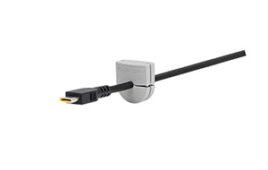Charlottesville, VA — GE Fanuc Intelligent Platforms announces that it‚’s PACSystems‚â„¢ SafetyNet had received approval from the Lloyds Register Group for marine, offshore and industrial use in Lloyd‚’s environmental categories ENV1, ENV2 and ENV3. With this new approval, PACSystems SafetyNet can now be used in functional safety applications, including fire & gas, emergency shutdown and burner management systems on-board ship applications.
Lloyd‚’s Register is one of the leading certification authorities for marine equipment. The Environmental Categories that PACSystems SafetyNet is approved for (ENV1, ENV2, and ENV3) cover controlled environments; enclosed spaces subject to temperature, humidity and vibration; and enclosed spaces subject to generated heat from other equipment.
GE Fanuc PACSystems SafetyNet is a cost-effective functional safety system that meets the safety needs of today‚’s Emergency Shut Down, Fire & Gas and Burner Management applications. It provides an open, user-friendly, adaptable, trustworthy and cost-effective safety platform. Benefits include:
–Increased availability: SafetyNet offers redundant controllers, power supplies and local area networks to increase availability of the SIL 2 safety function and to reduce the rate of nuisance trips.
–Safety Certified Peer-to-Peer Communication: With SafetyNet P2P, a robust and secure protocol, this application meets the needs of SIL 2 safety functions where inputs and outputs are connected to different nodes.
–HART‚® Capability: Smart HART field instrumentation has enabled new control and asset maintenance programs, and SafetyNet gives access to these powerful tools.
–Normally Energized and De-energized: Safety Net digital output channels are certified for both normally energized and normally de-energized applications, and can be configured channel by channel.
–Rapid Application Development: SIL 2 safety applications are developed in the SafetyNet Workbench, using Structured Tex (ST), Ladder Diagram (LD), and Function Block Diagram (FBD).
::Design World::
Filed Under: CONNECTIVITY • fieldbuses • networks





Tell Us What You Think!